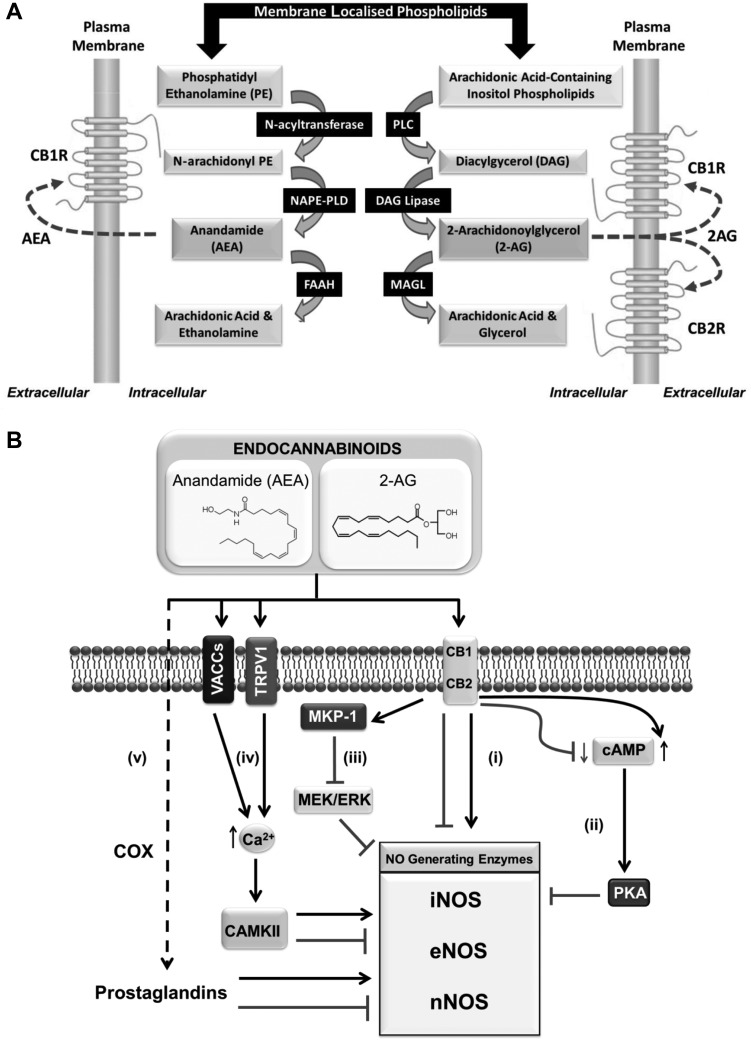Figure 2.
Major pathways involved in the biosynthesis of endocannabinoids and the modulation of NO• production by the ECS. (A) Schematic showing the principal enzymes implicated in the synthesis of the endocannabinoids AEA and 2-AG, which in turn can act on target receptors such as CB1R and/or CB2R in order to convey their biological actions. (B) Activation of CB1R and/or CB2R has been reported to either stimulate or repress the activity of enzymes implicated in NO• synthesis as indicated (i). Cannabinoid receptor activation can lead to either the activation or impairment of intracellular cAMP levels depending on cell type, which in turn may accentuate or relieve PKA-mediated inhibition of NOS-generating enzymes, respectively (ii). Alternatively, CB1R stimulation has been reported to repress NOS activity through activating the protein phosphatase MKP-1 (iii). Endocannabinoids such as AEA have also been shown to target the vanilloid receptor TRPV1 and voltage-activated calcium channels (VACCs) (iv). In these cases, TRPV1/VACC activation would promote elevations in intracellular calcium signalling that may subsequently impact upon the activity of NOS enzymes, for example by regulating CAMKII activity and/or calmodulin binding. Following their uptake into cells, endocannabinoids can also be further processed (by the action of COX enzymes) into derived metabolites such as prostaglandins (eicosanoids), which have also been shown to modulate NOS activity (v).

